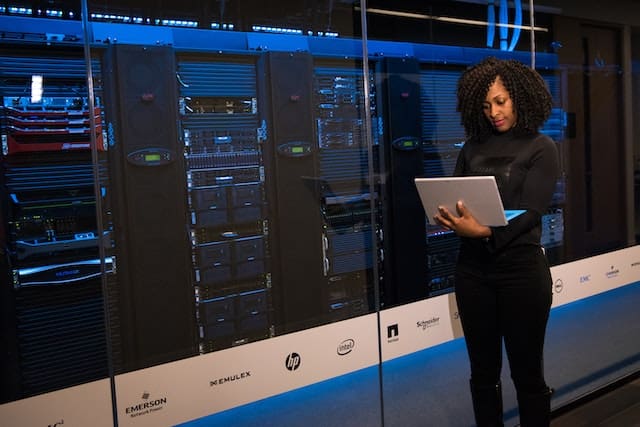A (perhaps) surprising forerunner of Edge computing technology is the benefits it brings to education. No one is better placed to take advantage of rapidly evolving tech than the adults of tomorrow – just one of the reasons that students should be some of the first to take advantage of a new way of learning.
To summarise what we mean by the concept, Edge computing brings data analysis and storage closer to where it occurs. This means that the burgeoning amount of information that spews from computers, smart devices and other applications can be quickly sorted at source, rather than sent large distances to cloud storage or an energy-hungry and real estate-heavy onsite server room.
Learning merits aside, the benefits of versatile Edge storage – served by advanced tech, such as micro data centres (MDCs) – bring a multitude of advantages. These include:
- Robust connectivity
- Highly secure, both in the cyber and physical planes
- Reduced running costs – cheaper than massive amounts of cloud storage or the loss of valuable real estate for an onsite server room
- Benefits the environment – dramatically reduced energy needs for cooling and less greenhouse gas emissions
- Reduced or eliminated latency
- Faster deployment – MDCs can typically be up and running in just a few weeks
- Easily scalable as needed
Learning on the Edge: how Edge technology benefits education
Edge computing provides a fast, reliable connection and serves the many smart devices and advanced tech that’s already powering student learning. This translates ideally to the training environment, allowing pupils to embrace education in a variety of ways.
- Immersive and interactive learning: VR and AR have brought a new level of learning to the classroom. While latency might only be measured in milliseconds, the effect of this on such applications reduces the realism, whereas Edge data analysis and storage bring an elevated student experience. While this might not yet be fully in play, future interactions could see pupils benefiting from:
- VR laboratories
- Virtual experiments
- Working in other environments, such as space, underwater and more
- The addition of AR flashcards and worksheets to presentations
- Real-time feedback: Machine learning capabilities could mean that instant, real-time feedback becomes the norm. Edge computing will play a huge part in tracking and guiding the learning experience. Intelligent hardware and software are already a reality. As this advances, AI can instantly decipher areas in which a student excels, as well as where they struggle. The learning experience could be tweaked to provide a bespoke pathway, thus allowing the best learning experience tailored to the individual.
- Online classes: Augmented specifically to provide the right learning for students with a curriculum curated for each pupil’s individual needs.

By utilising a combination of Edge and cloud storage, both today’s and future technologies can take advantage of a complementary and advanced approach to learning. The benefits for teachers and professors are also immense and shouldn’t be underestimated. From an enriched learning experience to the removal of much of the time-consuming, but vital, tracking that’s currently done by human hand, educators will move to a wholly different teaching landscape.
While technology won’t remove the personal element of guiding and delivering education, it will provide a whole new layer of learning experiences. This applies to learning of all ages. Today’s infants will never know a world without highly advanced technology, providing a wonderful opportunity to integrate such elements from the early years.
Microsoft Teams Education and Google Classrooms are already in common use – scenarios speedily tweaked and honed courtesy of the pandemic. While these can never replace the vital element of face-to-face human interaction, a multi-structured approach powered by Edge-capable abilities is set to serve future generations of learners in a way never before experienced.
From sensors inside toys that respond to a toddler’s touch through to VR and AR surgical scenarios for medical students, the potential is tremendous. It’s not a case of if Edge computing will revolutionise the learning experience, but more a case of when it will become the norm.
Students, teachers and educational institutions are all set to benefit from the shift. Imagine shadowing a subsea engineering shift with an expert on the other side of the world or performing a virtual heart transplant under the expertise of AI. The potential is endless and can only be good for all involved.
Education is but one of the areas that Edge technology is making inroads. When it comes to arming the future workforce with the skills needed to benefit their families, communities and the population of the planet – not to mention addressing the global shortage of strategically and appropriately educated professionals – it’s easy to see that we really are teetering on the edge of wonderful revolution.
The Edge is here to stay – and no one is better placed to take advantage than those who hold the future of the planet in their hands – those in education. It’s an exciting time to be learning – and we can include the upskilling and/or re-training of those already in the workforce.
It’s an exciting time to be alive – especially if you’re in education. So watch this space…

